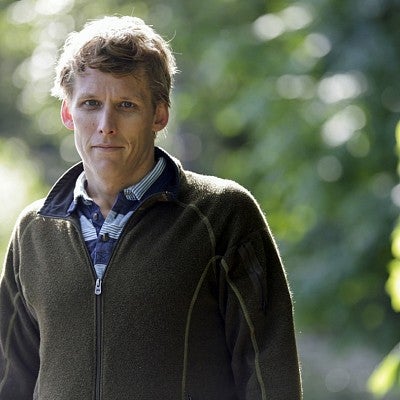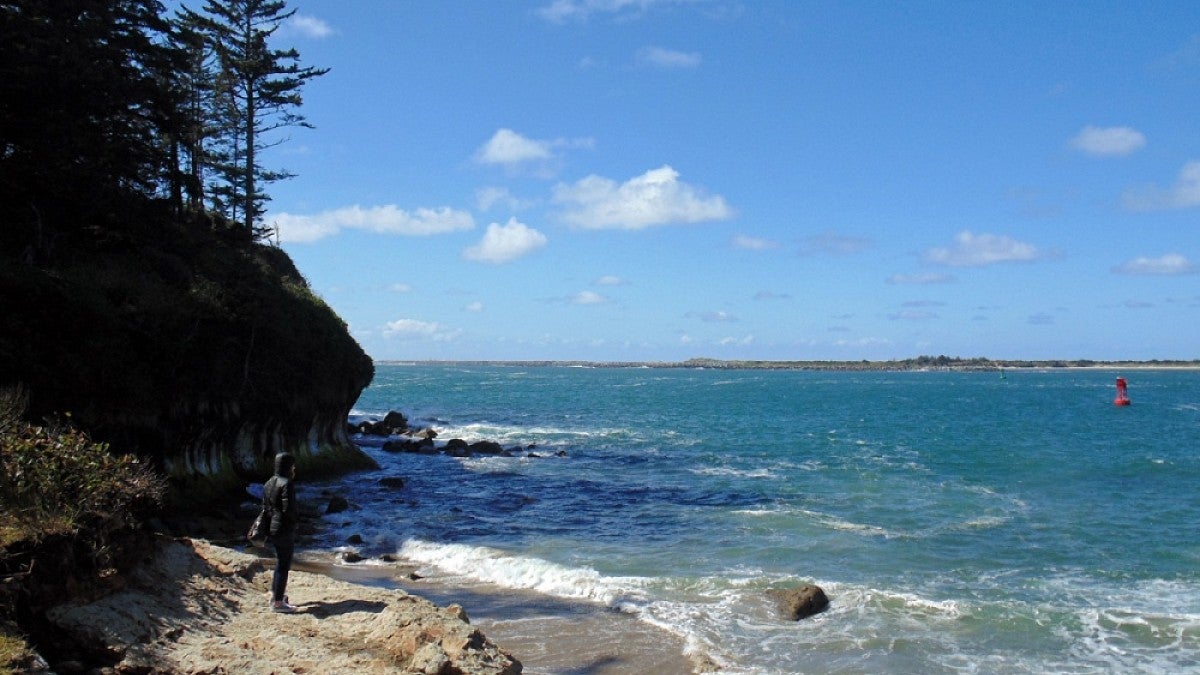Coos Bay has a long history of not falling victim to dangerously low levels of oxygen that often affect other Oregon coastal locations, according to a UO study, but climate change could bring changes, says UO oceanographer Dave Sutherland.
The research began as the master's thesis of co-author Molly A. O'Neill, who graduated in 2014. Together Sutherland and O'Neill took monthly water samples for about two years from a research vessel provided by the UO's Oregon Institute of Marine Biology in Charleston.

The resulting work, Sutherland said, showed that physical components of the Coos Bay estuary — a narrow offshore continental shelf and the deep-dredged, 15-mile-long ship channel — help keep it flushed during the summer when many other Oregon coastal estuaries struggle with low-oxygen conditions known as hypoxia. Helping to move the water is the influx of freshwater from the Coos River, despite a reduced flow because of a late-summer drop in rainfall.
In summertime, prevailing winds bring colder, more nutrient-rich water to the surface along the coast. North of Coos Bay, the offshore shelf is wider. The winds and shelf thus hold the seawater in the estuaries. As it stagnates, populations of microscopic organisms known as phytoplankton are more numerous near the surface. As they die and sink "dead zones" can form.
"As phytoplankton die, they sink to the bottom where all the oxygen gets depleted and you get low-bottom hypoxia," Sutherland said. That leads to stress on cool-water fish such as salmon. Bottom dwellers — crabs, oysters, worms, clams, sponges and rockfish — face potentially lethal effects. Such conditions are expected to worsen under a warming climate, according to numerous reports.
While oxygen levels fall to their lowest in Coos Bay in late summer, the physical factors combine to prevent lethal hypoxia, he said.
The findings are good news for the region's fishing industry, for now, Sutherland said. The study provides a foundation for monitoring and projecting how changing climate conditions may raise the chances of oxygen depletion, or hypoxia, in the future.
"This research was really about getting a wealth of baseline information so that we can figure out what is happening now and use it to help us prepare for what may happen in the future," he said. "The system is working now but could change based on weather conditions. "
For the study, published in the journal Estuarine, Coastal and Shelf Science, Sutherland scoured Oregon Department of Environmental Quality records from 1957 to 2007. He also analyzed measurements gathered since 2002 by the South Slough National Estuarine Research Reserve and since 2011 by the Confederated Tribes of the Coos, Lower Umpqua and Suislaw Indians.
"At the end of summer, the Coos River and other rivers along the coast that feed the estuaries generally dry up," Sutherland said. "Without precipitation, there is little flushing of the estuaries from the rivers, and there is little net exchange besides tidal movements."
The research will be featured in the new Charleston Marine Life Center as part of a five-panel display highlighting UO research.
Oregon Sea Grant, via funding through the UO's Environmental Science Institute, where Sutherland is a core member, supported the project along with the Oregon Legislature and National Science Foundation.
— By Jim Barlow, University Communications


